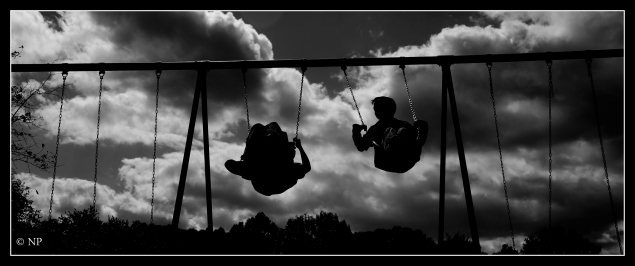I ran across this article in the support group. Very informative.
What Is Sensory Processing Disorder?
It usually happens in the preschool years. You notice that your toddler seems to have an unusual aversion to noise or light. A teacher observes that, compared to other kids her age, your daughter is clumsy and has difficulty with fine motor skills like wielding a pencil. You’ve noticed that she is very, very picky about shoes, which are often deemed too tight, and clothes that are “too scratchy.”
More baffling — and alarming — to parents are their children’s meltdowns over things like their faces getting splashed or being dressed. Or a child might crash into walls (and people), touch everything or put inedible items, including rocks and paint, into his mouth.
These behaviors are all signs of problems with what’s known as sensory processing, found in children who have difficulty integrating information from their senses. In its extreme form, when it interferes seriously with a child’s functioning, it’s called Sensory Processing Disorder, or SPD, although it’s not recognized by the psychiatrists’ bible, the Diagnostic and Statistical Manual.
Sensory issues are associated with autism because they are common in children and adults on the autism spectrum, though most children with SPD are not on the spectrum. They can also be found in those with ADHD, OCD and other developmental delays — or with no other diagnosis at all. In fact, a 2009 study suggests that one in every six children has sensory issues that impede their daily functioning, socialization and learning.
What parents often notice first is odd behavior and wild, inexplicable mood swings. For instance, a first-grader may do fine in a quiet setting with a calm adult. But place that child in a grocery store filled with an overload of visual and auditory stimulation and you might have the makings of an extreme meltdown.
“These kids’ tantrums are so intense, so prolonged, so impossible to stop once they’ve started, you just can’t ignore it,” notes Nancy Peske, whose son Cole, now 13, was diagnosed at 3 with SPD and developmental delays. Peske is coauthor with occupational therapist Lindsey Biel, who worked with Cole, of “Raising a Sensory Smart Child.”
Another response to being overwhelmed is to flee. If a child dashes out across the playground or parking lot, oblivious to the danger, Peske says that’s a big red flag that he may be heading away from something upsetting, which may not be apparent to the rest of us, or toward an environment or sensation that will calm his system. This “fight-or-flight response is why someone with SPD will shut down, escape the situation quickly, or become aggressive when in sensory overload,” she says. “They’re actually having a neurological ‘panic’ response to everyday sensations the rest of us take for granted.”
Children, teens and adults with SPD experience either over-sensitivity (hypersensitivity) or under-sensitivity (hyposensitivity) to an impairing or overwhelming degree. The theory behind SPD is based on the work of occupational therapist Dr. A. Jean Ayres. In the 1970s, Dr. Ayres introduced the idea that certain people’s brains can’t do what most people take for granted: process all the information coming in through seven — not the traditional five — senses to provide a clear picture of what’s happening both internally and externally.
Along with touch, hearing, taste, smell and sight, Dr. Ayres added the “internal” senses of body awareness (proprioceptive) and movement (vestibular). When the brain can’t synthesize all this information coming in simultaneously, “It’s like a traffic jam in your head,” Peske says, “with conflicting signals quickly coming from all directions, so that you don’t know how to make sense of it all.”
What are these two “extra” senses in Dr. Ayres’ work?
Proprioceptive receptors are located in the joints and ligaments, allowing for motor control and posture. The proprioceptive system tells the brain where the body is in relation to other objects and how to move. Those who are hyposensitive crave input; they love jumping, bumping and crashing activities, as well as deep pressure such as that provided by tight bear hugs. If they’re hypersensitive, they have difficulty understanding where their body is in relation to other objects and may bump into things and appear clumsy; because they have trouble sensing the amount of force they’re applying, they may rip the paper when erasing, pinch too hard or slam objects down.
The vestibular receptors, located in the inner ear; tell the brain where the body is in space by providing the information related to movement and head position. These are key elements of balance and coordination, among other things. Those with hyposensitivity are in constant motion; crave fast, spinning and/or intense movement; and love being tossed in the air and jumping on furniture and trampolines. Those who are hypersensitive may be fearful of activities that require good balance, including climbing on playground equipment, riding a bike, or balancing on one foot, especially with eyes closed. They, too, may appear clumsy.
To help parents determine if their child’s behavior indicates possible SPD, Peske and Biel have created a detailed sensory checklist that covers responses to all types of input, from walking barefoot to smelling objects that aren’t food, as well as questions involving fine and gross motor function, such as using scissors (fine) and catching a ball (gross). The SPD Foundation also offers a litany of “red flags.” The list for infants and toddlers includes a resistance to cuddling, to the point of arching away when held, which may be attributed to feeling actual pain when being touched. By preschool, over-stimulated children’s anxiety may lead to frequent or long temper tantrums. Grade-schoolers who are hyposensitive may display “negative behaviors” including what looks like hyperactivity, when in fact they’re seeking input.
Peske sums up the way sensory issues can affect kids this way: “If you’re a child who is oversensitive to certain sensations, you are not only likely to be anxious or irritable, even angry or fearful, you’re likely to be called ‘picky’ and ‘oversensitive.’ If you rush away because you’re anxious or you’re over-stimulated and not using your executive function well because your body has such a powerful need to get away, you’re ‘impulsive.’ If you have trouble with planning and executing your movements due to poor body awareness and poor organization in the motor areas of the brain, you’re ‘clumsy.’ Because you’re distracted by your sensory issues and trying to make sense of it all, you may be developmentally delayed in some ways, making you a bit ‘immature’ or young for your age.”
Amid this confusion, there may be relief for more than a few parents in recognizing what may be causing otherwise inexplicable behavior — and in the potential for kids to get help in the form of specialized occupational therapy and what are called sensory gyms.
“When I describe sensory issues to parents whose kids have it,” Peske says, “the usual reaction is ‘Oh, my gosh, that’s it!’ They’ve been trying to put a finger on ‘it’ for many months, even years! The sense of relief that they finally know what ‘it’ is is humongous.”
Child Mind Institute’s Speak Up for Kids is an annual public education program held during National Children’s Mental Health Awareness Week (May 6-12, 2012) aimed at ending the stigma, lack of awareness, and misinformation that cause children to miss out on treatment that can change their lives.
This story is part of Speak Up for Kids, an annual public education program held during National Children’s Mental Health Awareness Week (May 6-12, 2012).
Posted: 05/10/12
Written by Beth Arky.





 After learning about SPD…we understood why vacuuming was so important to our son.
After learning about SPD…we understood why vacuuming was so important to our son.